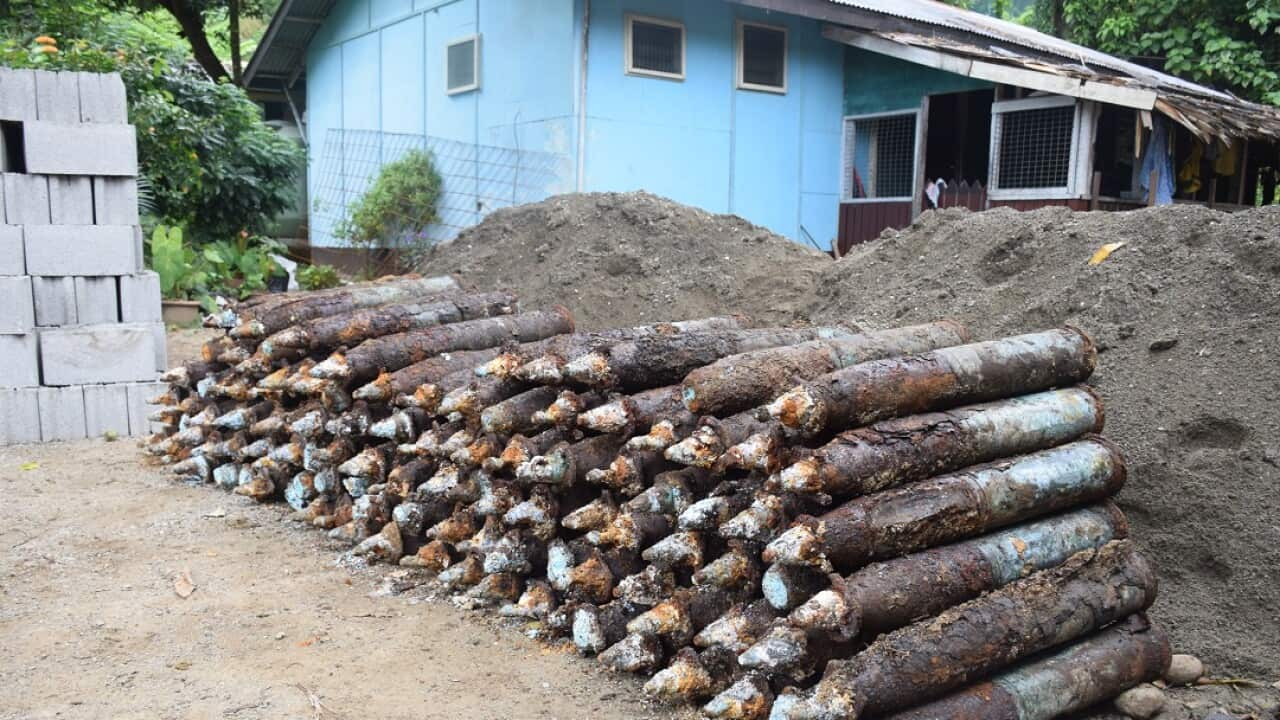Key Points
- Explosives experts have removed 202 unexploded munitions from St Nicholas Anglican School in Honiara.
- The explosives had been present for over 80 years and date back to World War Two.
- Many unexploded bombs are believed to remain in Solomon Islands and their removal could take decades.
Explosives experts in Solomon Islands dealt with a bomb threat at a school this week, which turned out to be more than just a prank call.
Staff and students stayed outside of the school gates on Tuesday as more than 200 unexploded bombs were removed from beneath the dirt right next to buildings at St Nicholas Anglican College in the Pacific archipelago's capital of Honiara.
The rusty projectiles had been there for about 80 years, and their discovery highlighted recent warnings that it could take the nation decades to fully clear away unexploded munitions from World War Two.
Uncovering the UXOs
The Royal Solomon Islands Police Force (RSIPF) was alerted to the items after a hole was dug for sewage works next to a staff house on the school grounds.
The school was kept closed and the Explosive Ordnance Disposal Department (EODD) of the RSIPF was called in.
A total of 202 Unexploded Ordnance (UXOs) were removed from the school grounds, with photographs provided by the police force showing large bombs in the soil beneath and right next to a building.

The Royal Solomon Islands Police Force has an Explosive Ordnance Disposal Department to deal with the projectiles left behind during World War Two. Source: Facebook / Royal Solomon Islands Police Force
Less than a year ago, the school where the explosive items were found had been renovated with Australian government funding to accommodate athletes for the Pacific Games.
Dangerous legacy of war
Finding UXOs in the Solomon Islands is not uncommon.
The United States and its allies fought Japanese forces for control of military bases in the country during World War Two.
Thousands of unexploded bombs as well as ammunition were left behind.
READ MORE
Etoundi wins gold at Pacific Games
While some were simply unused, a large proportion of munitions deployed didn't detonate upon impact all those years ago.
Since the end of the war, there has been a push for the US to take greater responsibility for surveying and safely removing the items.
According to HALO Trust, one of several NGOs involved in projects to locate and deal with unexploded bombs, the RSIPF destroyed almost 42,000 munitions between 2011 and 2020.
Explosives pose a deadly threat
Many Solomon Islanders have lost their lives, and others have been left scarred for life, after coming across unexploded munitions — but there are no official statistics for how many may lie scattered across the archipelago.
A 2016 report titled 'Solomon Islands' Explosive Legacy' noted there were no explosive remnants of war incident statistics kept in Solomon Islands.
However, a doctor at Honiara's National Referral Hospital was quoted as saying that the hospital usually deals with five to six patients injured by such items each year.

Unexploded projectiles collected by the Explosive Ordnance Disposal Department are taken to and disposed of at Hell's Point on the outskirts of Honiara. Source: Facebook / Royal Solomon Islands Police Force
In 2020, Australian Trent Lee and Briton Stephen "Luke" Atkinson, both aid workers,
Some local fishers seek out unexploded munitions to remove the explosives within them to carry out a destructive fishing method known as 'dynamite fishing', which stuns or kills fish.
An ongoing issue
Tunuki said the discovery of the unexploded bombs at the school "really is an eye opener for schools, domestic and commercial houses for them to think heavily about site inspection for UXOs before they start erecting buildings".
He has recently been quoted saying it could take another 20 years or more to rid the entire country — made up of more than 900 islands — of unexploded ordnance from World War Two.
Australia is among the countries that provide Solomon Islands with support for surveying land for munitions.
Members of the Australian military will participate in identifying and disposing of explosive items in the Western Province as part of Operation Render Safe, scheduled for September.










